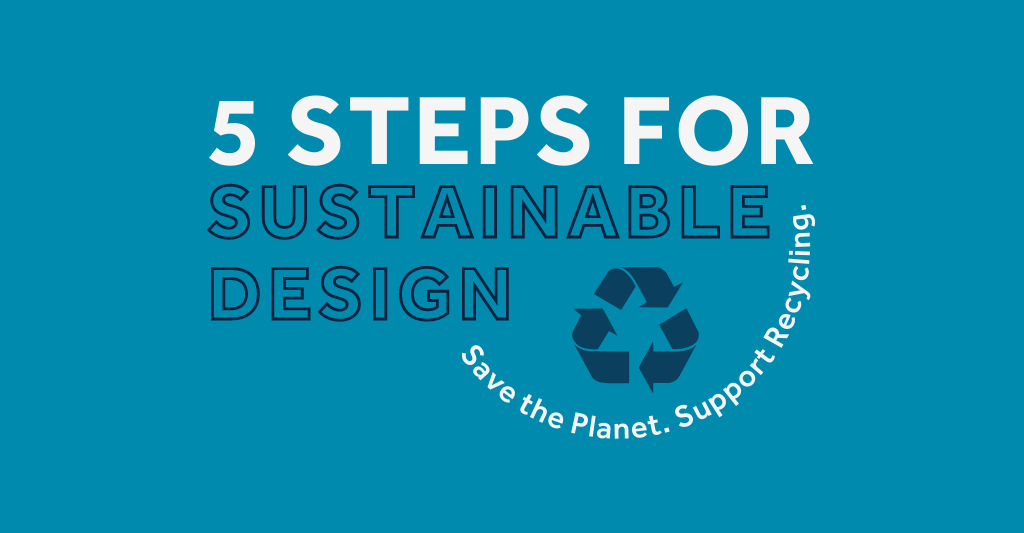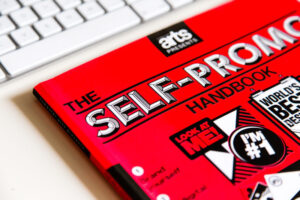Table of Contents
- 5 Steps for Sustainable Design
5 Steps for Sustainable Design
This year has been pretty tough for all of us. With all the continuous negativity it’s sometimes been difficult to see the positives of the situation. But there are positives, huge ones in fact!
Back in June 2020 we all saw the world begin to heal! The pictures were everywhere and the evidence was damning. After months of the world being at a standstill we saw the swans going back to Venice, we saw the waters at Blackpool clear, and we saw the damage that we’ve done start to reverse.
So, in honour of Global Recycling Day, we thought we’d take a moment to point out 5 things we can do in our roles to help continue that change and promote sustainable design.
- The Usual
This is the easy part- changes in the workplace. Whilst these aren’t necessarily specific to the design industry, they’re still important to mention.
Firstly, all(!) electricals should be turned off when not in use. Computers are one of the main resources used in design and they use a crazy amount of energy. Where you can, just keep them off.
Secondly (and probably most obviously), use energy efficient light bulbs wherever possible. I know certain areas require specific lighting like studios etc, this is just to say where you can, try opting for energy efficient alternatives.
Lastly, think globally, act locally. Do what you can where you are. Here at Waterside we use local printing companies to cut down on our carbon emissions. It’s about the small things we can do to help the big change for sustainable design.
- Put a Stop to E-Waste
Like most people, designers use computers everyday. Still the majority of us aren’t recycling them.
E-waste contains massive amounts of chemicals like mercury, lead, and beryllium (believe me, they’re as serious as they sound!) that are harmful to us and the environment. When electricals are dismantled during improper disposal, these chemicals end up in our land, seas, and air.
Currently, the UK is the second largest producer of electronic waste globally, producing around 1.5 million tonnes a year. But less than 20% of all electronics globally are recycled. We can’t carry on like this. As an industry we need to take responsibility and recycle.
- Our Influence as Designers
We may not realise it, but designers can play a hugely influential role in how businesses conduct themselves. In creating efficient websites for our clients we are able to digitalise many of the documents they have previously routinely printed. Turning paper based forms into fillable PDF documents is a small service we can provide that can be massively significant in reducing their paper wastage.
We’re in a unique position where we have the power to influence other businesses and industries outside of our own. We should use this opportunity to encourage our clients to take a green approach in their business practices and packaging choices.
We don’t deny that sustainable alternatives can be more costly than other options available. However, being ‘sustainable’ can often act as an advert in itself.
More and more, customers are becoming aware of their responsibility to buy sustainably, and frankly the market has never been better for eco-friendly products and packaging. Brown Kraft packaging is fast becoming branding in itself, consumers see it on a shelf and immediately get a sense of a brand’s values.
We know it doesn’t suit everyone’s image but there are always other eco-friendly options that we should encourage clients to consider.
Sustainable design goes beyond just the designer, we have to acknowledge the impact of what we create and try to encourage our clients to consider natural resources as part of the design.
- Research our Resources
The volume of materials used in the industry is vast and there are always ways we can improve on this; starting with our paper consumption. Bleached paper requires the use of toxins that leach into our water system. The paper industry itself is responsible for massive amounts of deforestation.
In the endeavour for sustainable design practices we should always ask ourselves if there are better options. And there are.
In the global market, around 13 million metric tons of pulp come from alternatives to wood, and all of this can be used to make paper. Tree-free paper alternatives utilise pre-existing agricultural waste like sugar cane, straw, hemp, seaweed, algae etc. We should all aim to try and bring eco-conscious alternatives into the industry. And even better, where we can, go paperless!
Most of us are also aware of the damage that ink can cause to the environment. Many of us have switched to soluble and vegetable inks in our work already, however this is also something we must pay attention to in the design process. Some inks can render cardboard and other seemingly green products unrecyclable. When designing, we must always encourage safer and more eco-friendly options for our clients.
- Stay Informed
Most importantly, something that we all must do, is stay informed. The Society for Responsible Design is a website dedicated to keeping designers in the know about how we can continue to make changes for a sustainable future. Developments in ink and eco friendly packaging materials are constantly making headlines, the change is happening, so let’s get creative and see what we can do to help save the planet!
Here are some examples of innovative and sustainable designs that we love!







